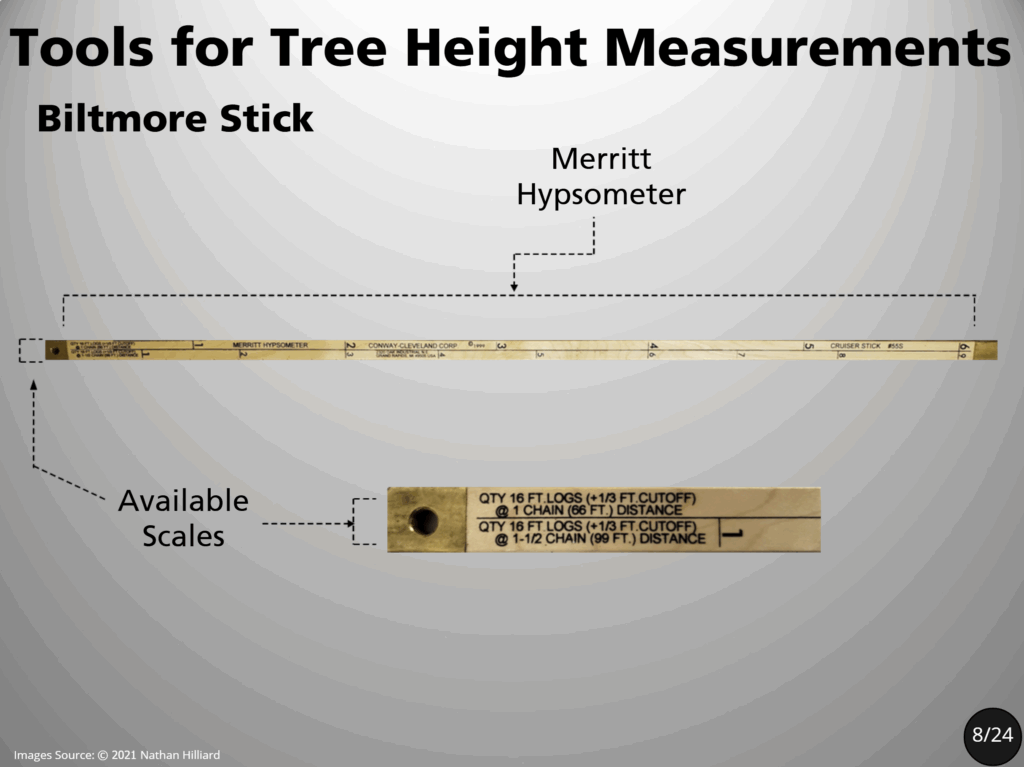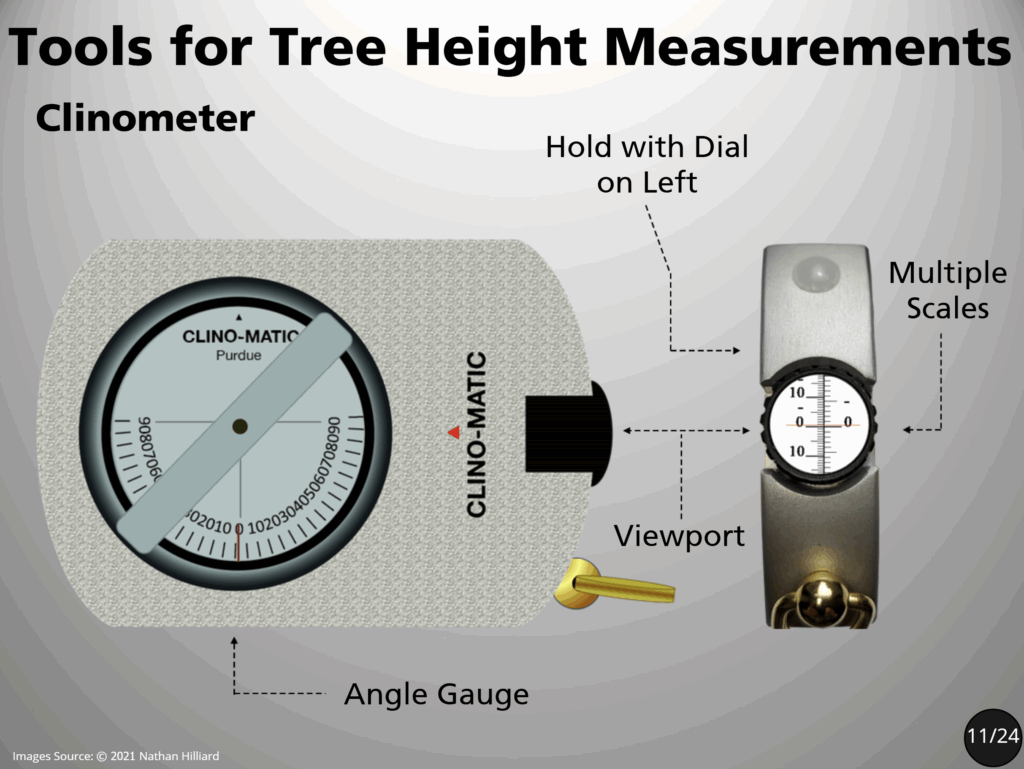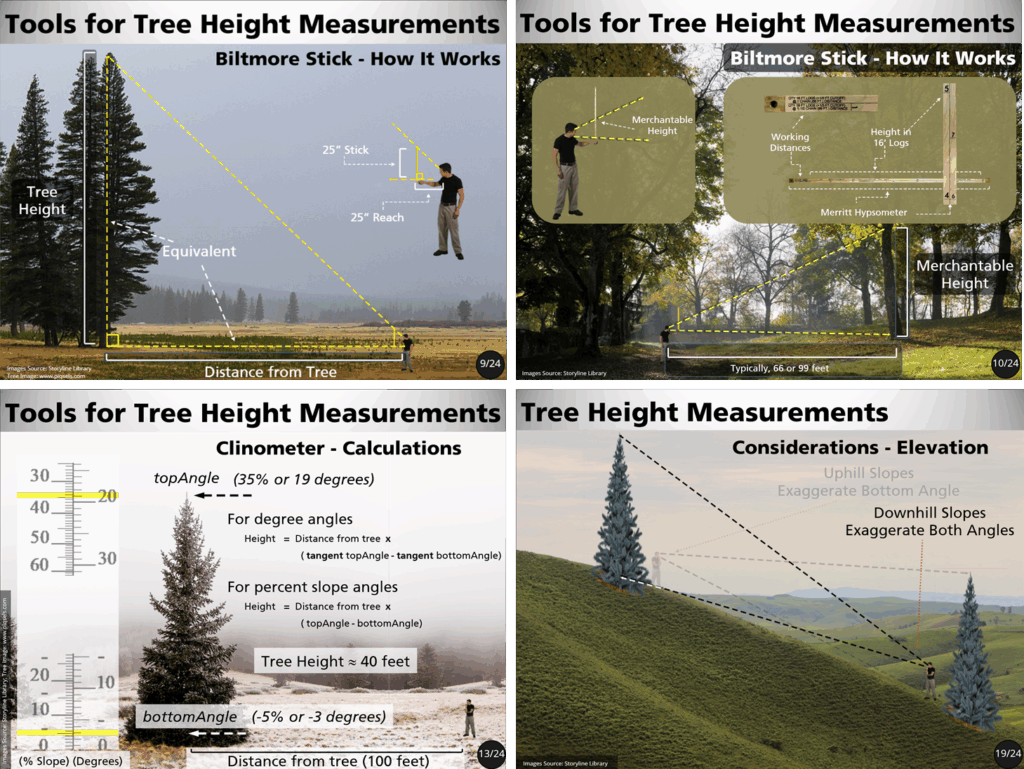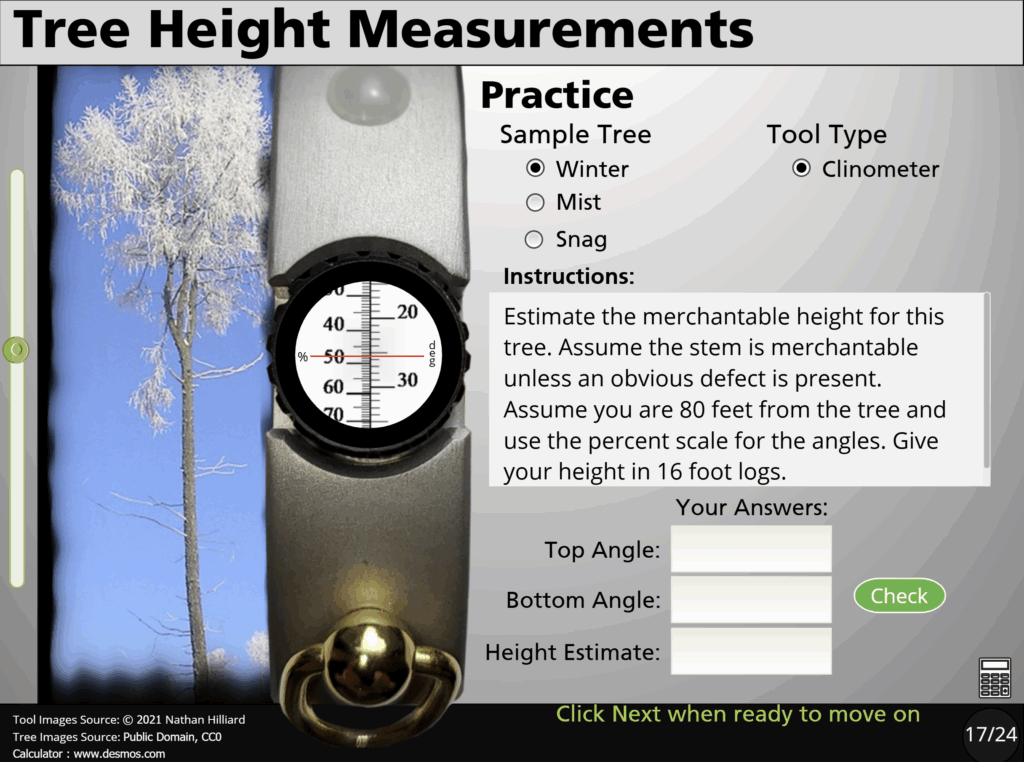
Demo
This project created a supplemental, self-directed, asynchronous eLearning module preparing learners to engage in the field measurement of forest tree heights during a university forestry laboratory course.
- Responsibilities: Instructional Design, eLearning Development, Supplemental Content Development, Multimedia Design and Development, JavaScript coding, Subject Matter Expert
- Target Audience: Undergraduate intermediate-level forestry students
- Tools Used: Articulate Storyline, PowerPoint, Irfanview
- Budget: Low
- Client: Purdue University Forestry
- Year: 2021
Overview
As part of the teaching team for the Forest Measurements course within Purdue University Forestry, I acquired firsthand experience with some of the shortcomings associated with limited laboratory time and experiential field opportunities. I wanted to offer learners a means to supplement their procedural experiences with a more accessible digital option that could be completed at will and asynchronously outside of the classroom environment.
Project Origins
{Optional summary of how the project came to be and what influenced design decisions or tools}
Design Approach
{Optional summary of the justifications for the basis of the design. May include problems identified, theories used, project specific definitions, and sample integrated content – a few lines to several paragraphs}
Process
This instruction centered around the proper use of two common height measurement tools. The design process focused on the theroy behind their function, proper technique, interprtation of results, and simulated practice when appropriate.


Since this was small module based on personal knowledge of field techniques, detailed storyboards and prototypes were not developed.

Action Map {or} Instructional Design
{Process to identify key actions leading to goal resolution for client – 2 to 3 lines}
{or}
{Steps of an instructional design process employed to drive design – 5 to 10 lines}
Text-Based Storyboard
{Story design process, describing key focus points of story and resulting storyboard and its contents – 5 to 10 lines}
Prototype
For the more complex measurement tool, the clinometer, a software simulation was developed to allow the learners an opportunity to practice their technique and their interpretation on the results.

Final Product
The final module served as a supplemental tool available for learners interested in additional practice with techniques, and as remediation for learners who found their own technique to need improvement based upon field practice assessment results. The self-driven nature of the module allowed learners to access the knowledge if and when it was appropriate for them.
Client Testimonial
{Optional paragraph summarizing client feedback or comments on final product}
Results and Takeaways
This was one of my earliest Articulate Storyline projects, utilizing basic techniques and a mixture of buit-in and custom media resources. It was also my first venture into including custom JavaScript to expand the available functionality of the product. I found Storyline to be an easy to use and rather robust platform for developing digital learning, and look forward to more advance projects where I can further push its capabilities.